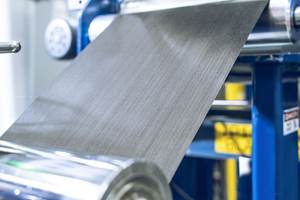SAM|XL develops closed-loop manufacturing for composites
Collaborative R&D center at TU Delft develops sensor- and robot-based automation for Composites 4.0 manufacturing, including STUNNING project for welded assembly of a thermoplastic composite fuselage demonstrator.
Smart Advanced Manufacturing XL, or SAM|XL (Delft, Netherlands) is a 2,000-square-meter collaborative research center on the campus of TU Delft that develops automation for intelligent manufacturing using composites and other advanced materials. It was founded in 2018 by two departments at TU Delft — Aerospace Engineering and Cognitive Robotics — in partnership with aerospace industry partners in the region, including GKN Fokker center of competence for assembly automation (Papendrecht), Airbus Defence & Space Netherlands (Leiden), KVE Composites Group (The Hague) and Airborne (The Hague), as well as the regional development agency, EFRD. “There are a lot of centers that do composites with robots,” says Kjelt van Rijswijk, CEO of SAM|XL, “but most are based on offline programming. The industry needed a center for closed-loop manufacturing.”
SAM|XL features a cross-faculty and interdisciplinary team from TU Delft as well a dedicated in-center team comprising composites, aerospace robotic, software and mechatronic engineers. It is working with fiber placement and winding processes, 3D printer-based additive manufacturing, quality assurance (QA) and inspection, machining, surface finishing and assembly processes, such as thermoplastic composite welding. It pursues three main types of projects:
- Advancing adaptive manufacturing infrastructure – Equipment that can compensate in real-time for variations that occur during manufacturing processes without manual programming: mechatronic and robotic innovation, new algorithms, software tools.
- Proof-of-concept – Fine-tuning the adaptive manufacturing equipment to the specific use-cases of the industrial community
- Knowledge dissemination and education projects to build the workforce of the future.
SAM|XL is a non-profit organization that is supported by companies that have formally joined as Participants. These advise on the center’s strategic direction and technology roadmap and make shared investments in its infrastructure. SAM|XL owns the infrastructure and makes it available, together with relevant expertise, to projects with industry and academia. Suppliers that support SAM|XL in establishing and advancing the center’s infrastructure are Technology Partners.
Collaborative engineering, open infrastructure
We continue to build our own team of engineers,” says van Rijswijk. “We see that it is important to bridge contextual fields, such as aerospace and composites, with software, robotics and mechatronics. The team mainly consists of the latter, but there are several of us that are mainly from aerospace and composites manufacturing. Our project teams always consist of product and manufacturing engineers from our partners as well as machine integrators and software guys from SAM|XL. And we work collaboratively on maturing the concepts, testing and demonstrating them and potentially supporting with their eventual implementation into production.”
One of the key aims, he explains, “is to have a toolbox of software that we can share and an open infrastructure, where we can tune these toolboxes and our infrastructure to achieve the special use cases for our projects.” Van Rijswijk notes this also builds the center’s knowledge and capabilities, which it then uses to advance manufacturing going forward in other projects.
Sensors, closed-loop control
“In everything we do with our robots,” says van Rijswijk, “we can listen to sensors and implement a closed feedback loop. And even though the way we do this will differ per use case, based on manufacturing and part requirements, the idea is to jointly develop with our industry and academic partners automation solutions for closed-loop control that are flexible and can be expanded in the future.” He gives an automated welding tool as an example. “You need to have a closed loop for temperature and speed to make sure that your weld is good, but also one related to the geometry of the component that the welder has to follow.”
A key aspect of this closed-loop control is that there is zero programming of the robots. “This means you must have robotic devices and sensors that are talking to each other,” says van Rijswijk. He shows a grinding robot and a metal workpiece. “That metal workpiece is unique, and the robot has never seen it,” says van Rijswijk. “The robot is also not pre-programmed, but instead makes a scan of that piece, and the operator then selects the particular surfaces that the robot will grind. The robot recognizes that selection and performs the grinding operations itself. The operator is not programming the robot but is only clicking which surfaces and to proceed. The robot is using sensors to teach itself what to do, rather than waiting for an expensive programmer to program it.”
This brings to mind the June 2020 sidebar, “No business case for teaching robots”, where Dr. Michael Kupke, head of the Center for Lightweight Production Technology (ZLP, Augsburg, Germany) asserts, “Composites 4.0 is not just using robots. It is the technology that ensures you don’t have to teach the robots, because there is no business case for that.”
Van Rijswijk agrees, “because that would be programming again. And especially in a high-variation, low-volume manufacturing setting with large composite products, you would have to re-teach a robot for each occurring variation.” He gives examples: product variations, shape variations, orientation/location on the production floor and variations across product surfaces (e.g. to sand an entire surface or only the rough patches?). “Even in the unlikely case that teaching is commercially viable,” says Van Rijswijk, “the robot is simply conducting its task without monitoring/controlling the material deposition and polymer conversion processes that ultimately give composite products their strength.”
“You can teach a robot,” he continues, “but that doesn't mean you're going to get a product with proven quality in the same way as when the product was made by a certified composite worker. Take wind turbine blades, for example, where the adhesive bondline between the two molded halves may sometimes be 1 centimeter thick and sometimes 5 centimeters thick. And these wind turbine blades, as manufactured, obviously do not always match the CAD model of the blade at centimeter accuracy. But yet, a skilled worker sanding the bonded blade can compensate for these differences. But if you just send a robot based on a generic program, it's going to make a mess. You need direct feedback between a 3D camera that tells the robot, exactly at that time, what the shape is at that position of the turbine blade, and the robot can recalibrate. If you don't do that, by the time you finish teaching a robot, you might as well just sand the blade manually using cheaper labor. I fully agree that teaching is just another way of programming and therefore, in our type of use cases, there is no business case for that. For setting up research experiments and for education on robotics, on the other hand, teaching robots is a very powerful tool.”
ROS Industrial middleware
Part of what makes this coordination between robots and sensors possible is SAM|XL’s use of ROS Industrial as the robot operating system. “Actually, it is more of an environment versus a software platform,” says van Rijswijk. “It is a middleware that allows connecting nodes together, where each node represents a piece of software that may be reading a sensor or moving an actuator.” ROS Industrial was specifically developed for connecting robots with external sensors and is used throughout the global robotics community to develop this intelligence. “If you want to have real-time feedback between a 3D camera, for example, or a pressure sensor, then you need something that can, in real-time, send updated information to the robot controller. Normally, your robot controller can’t do that because it just receives a fixed program from a programmer and executes that blindly.”
Another advantage of using ROS Industrial is that it is brand agnostic. “It works the same whether you have a robot from Kuka, Fanuc or ABB,” notes van Rijswijk. “Normally, if you start programming in Kuka, you are either vendor-locked into Kuka or if you want to switch to a new programming language, you have to start all over from scratch again. However, with ROS Industrial, you simply replace the Kuka configuration file with a different configuration file, and you can reuse the entire intelligence on a different robot. For us as a research institute, it makes more sense to work with a middleware, because not all of our Participants and Technology Partners work with the same types of robots.”
Additive manufacturing, design and certification
Another factor for additive manufacturing, says van Rijswijk, “is that design must also be part of the closed-loop manufacturing process, because the digital design is the benchmark for validation of the process and manufactured part. For me, composites is additive manufacturing; so, 3D printing is not different. Therefore, if you want to do your closed loop manufacturing, your design needs to be part of it. So, what we're doing is making sure that your component design talks directly to your manufacturing process.”
“If we’re changing from manual to closed-loop digital processes, then your design must change,” he continues. “Products designed for manual production use references for human sensors, that can be seen by the human eye, for example. Design for automated manufacturing takes different aspects into account.”
Van Rijswijk sees quality assurance and certification for safety-critical and load-bearing 3D-printed composite parts as the “elephant in the room” that receives insufficient attention. “Everybody is 3D printing, but if you cannot follow what the printer is giving you in terms of carefully monitored/controlled process conditions, how can you be sure that the resulting mechanical properties correspond to the design values that were used? The only way to currently do this is by printing multiple products of which the quality is verified via destructive testing. This is not only prohibitively expensive, but also defeats the purpose of single-piece manufacture via 3D printing. That's why I think this data-accessible, closed-loop manufacturing is a necessary precondition for affordable certification. You then have the data to say the product is good and qualified. It’s linking sensors to your automated processes, and that's exactly what we do.”
Van Rijswijk sees new, AI-based certification methods for additive manufacturing and composites being developed — although still in their infancy — and also manufacturing that is more interactive with the production environment, including production workers. “There’s a lot of data that can be generated with all the sensors that can be projected on a screen or augmented reality glasses,” he notes, “so that at least the operator who is responsible for the process step is informed. It might be just green lights and no red lights, so that he or she at least has peace of mind to press play on the robot and know that it's correct. There will also be a combination of humans doing human tasks, robots doing robot tasks and people and robots working together. But both need to have a good interface to understand what each other is doing from both a practical operational point of view as well as for safety.”
MFFD and STUNNING project
The MFFD lower skins were made using AFP and consolidated in the 20 x 5.8 meter autoclave at DLR in Stade, Germany. Photo Credit: DLR
One of SAM|XL’s current projects is assembling the lower half of the Clean Sky 2 Multifunctional Fuselage Demonstrator (MFFD), as part of the STUNNING project (see “Proving out LM-PAEK welding for the MFFD” and “Manufacturing the upper half of the MFFD”). The MFFD lower fuselage half measures 8 meters long, 4 meters wide and 2 meters high. Leo Muijs, chief technologist assembly systems at GKN Fokker, explains that assembly started earlier in 2021. The skin was made by NLR (Netherlands Aerospace Center, Amsterdam) using AFP and then consolidated in the autoclave at the German Aerospace Center's facility in Stade, Germany. (https://www.nlr.org/news/nlrs-stunning-project-departs-for-next-generation-composite-planes/). After trimming to net size and NDT inspection by NLR, the finished skin will be delivered to SAM|XL by the end of October. Several end-effectors for assembly, along with the welding jig for the fuselage, were developed by the Clean Sky CfP09 consortium TCTOOL. These will also be in place at SAM|XL by the end of October.
GKN Fokker will use a pick-and-place system, manufactured by TCTOOL partner FADA-CATEC (Sevilla, Spain), that will be maneuvered by the SAM|XL gantry system, to place the stringers and ultrasonic tack-weld them in place. A laser projection system will enable precise positioning of the stringers, which will be welded by continuous conduction welding. This will be accomplished using the welding jig designed by TCTOOL consortium leader TWI (Cambridge, U.K.). The jig is equipped with a 1-meter-long conduction welding head developed by GKN Fokker.
Automated welding in STUNNING will include (1) Conduction welding of stringers using welding beam (GKN Fokker); (2) Ultrasonic welding of clips/skin and clips/frame (TU Delft/SAM|XL); and (3) Conduction welding of equipped floorgrid to frames (GKN Fokker). Photo Credit: GKN Fokker
Next, pre-assembled frames made by GKN Fokker will be welded into place using ultrasonic welding and injection molded clips from the EcoClip program. The end-effector for this ultrasonic welding operation has been developed by SAM|XL together with TU Delft. After systems installation, the pre-equipped floor grid will be joined with the fuselage by conduction welding via an end-effector mounted on a cobot hanging upside-down from the SAM|XL gantry system. This end-effector is designed by TCTOOL partner LSBU (London South Bank University, U.K.) and equipped with a conduction welding device for short welds developed by GKN Fokker.
SAM|XL will work with partners in the PENELOPE project to integrate closed-loop manufacturing into welded assembly toward an industry-ready process. Photo Credit: PENELOPE website
“Our work will focus on how to make this type of assembly a continuous process that is industry ready,” explains van Rijswijk. “There is no coupling between the metrology and robot yet. This will be done in the PENELOPE follow-up project, which has already started. We can’t implement all of the automation steps in a single, one-off demonstrator. Lessons learned from STUNNING will be used to develop how to integrate closed-loop manufacturing into welding-based assembly processes. The goal is to take into account thickness variations and ambient condition variations without manual programming.”
SAM|XL will also participate in the ENLIGHTEN is another program. Led by TU Delft professor Clemens Dransfeld, it will develop multi-scale modeling and physical testing. “This program will include crystallinity formation at the micro level, which determines the strength of the polymer at that location. It will also look at the fibers, their movement during welding and subsequent stress development. Only by taking these microphenomena into account, in a large coherent program going through such a multi-phase approach, from micro to macro to micro, can you hope to get a proper prediction of the strength developed.”
“Again, STUNNING is not going quite as far as fully closed-loop manufacturing yet, but it makes sense that we will have to go that far. If I am welding, then I need to have more information to appraise the quality of the joint. So, this assembly is a first step towards that. It is about mechanizing and moving robots and developing the ability to attach sensors directly to the robots for continuous process monitoring and adjustment. The next step, being developed via the PENELOPE project, will be to have basically a component with proven quality coming out of these robot-based processes.”
Related Content
Plant tour: Joby Aviation, Marina, Calif., U.S.
As the advanced air mobility market begins to take shape, market leader Joby Aviation works to industrialize composites manufacturing for its first-generation, composites-intensive, all-electric air taxi.
Read MoreCycling forward with bike frame materials and processes
Fine-tuning of conventional materials and processes characterizes today’s CFRP bicycle frame manufacturing, whether in the large factories of Asia or at reshored facilities in North America and Europe. Thermoplastic resins and automated processes are on the horizon, though likely years away from high-volume production levels.
Read MoreJeep all-composite roof receivers achieve steel performance at low mass
Ultrashort carbon fiber/PPA replaces steel on rooftop brackets to hold Jeep soft tops, hardtops.
Read MoreDemonstrating composite LH2 tanks for commercial aircraft
Toray Advanced Composites and NLR discuss the Netherlands consortium and its 4-year project to build demonstrator liquid hydrogen tanks, focusing on thermoset and thermoplastic composites.
Read MoreRead Next
From the CW Archives: The tale of the thermoplastic cryotank
In 2006, guest columnist Bob Hartunian related the story of his efforts two decades prior, while at McDonnell Douglas, to develop a thermoplastic composite crytank for hydrogen storage. He learned a lot of lessons.
Read MoreCW’s 2024 Top Shops survey offers new approach to benchmarking
Respondents that complete the survey by April 30, 2024, have the chance to be recognized as an honoree.
Read MoreComposites end markets: Energy (2024)
Composites are used widely in oil/gas, wind and other renewable energy applications. Despite market challenges, growth potential and innovation for composites continue.
Read More




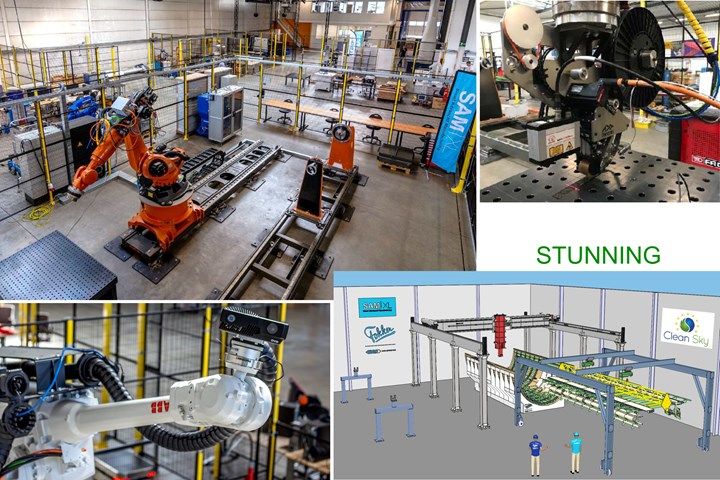
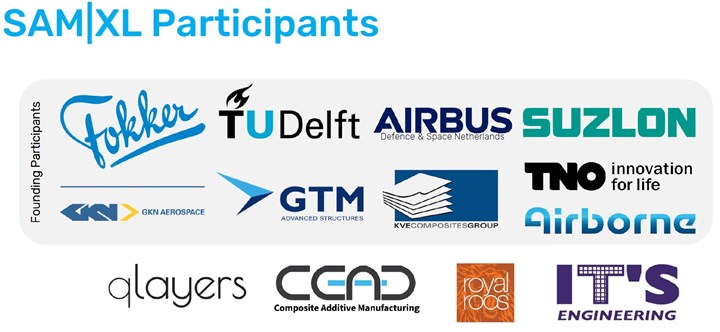
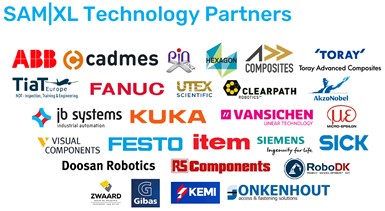






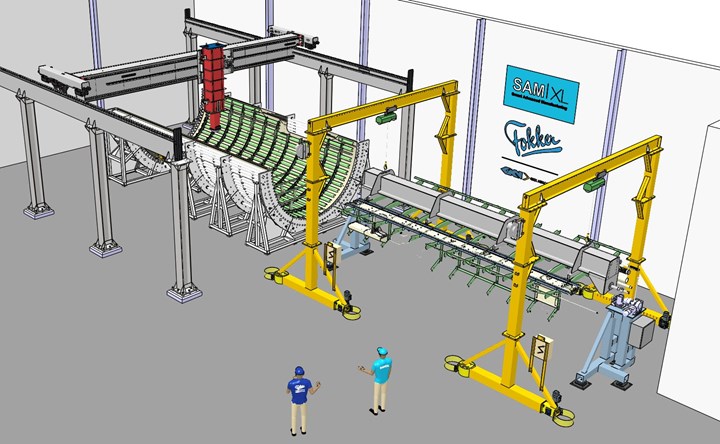
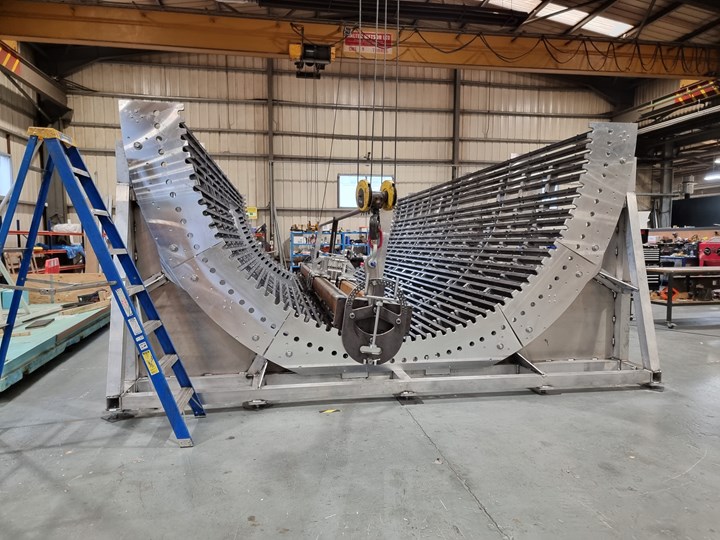
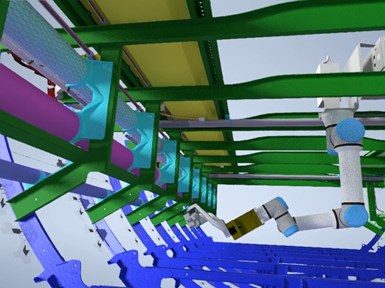

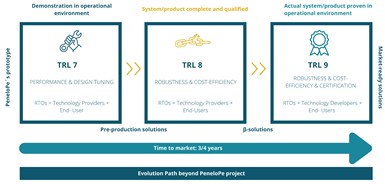









.jpg;maxWidth=300;quality=90)









